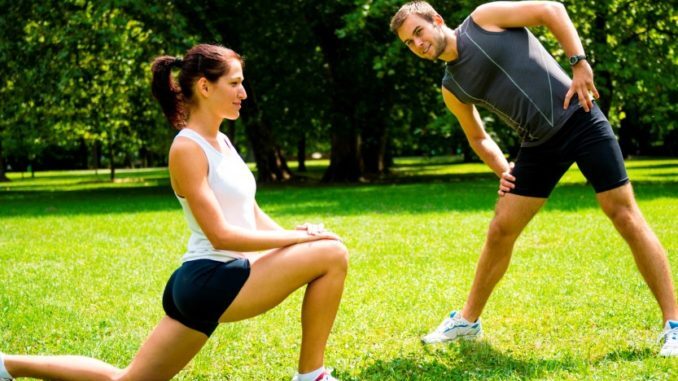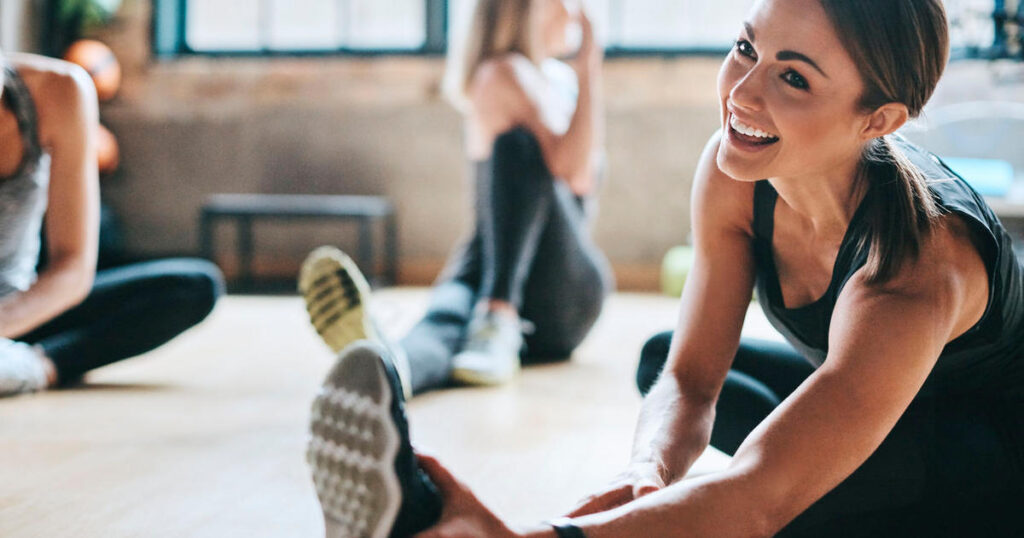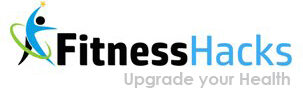
Everyone is racing against time. Always looking for shortcuts.
With the lack of time or maybe the confusion regarding just how important a ‘warm up’ session is, many of us tend to just jump right into the workout. And ‘cooling down’ does not mean sitting down and panting in front of the air conditioner!
A warm-up gradually revs up your cardiovascular system by raising your body temperature and increasing the blood flow to your muscles.
This helps reduce muscle soreness and also lessens your risk of injury. Cooling down after your workout allows for a gradual recovery of pre-exercise heart rate and blood pressure.
Static and dynamic stretching both have a place in a warm-up routine, but it depends on the kind of workout you are planning to execute. Here are specific steps you can take to warm up before an exercise.
Warming Up

Many people confuse stretching with warming up. They are not the same.
Warming up means exactly what it says – you need to warm up your body – raise your core temperature by one or two degrees Celsius before you do any stretching.
The goals of the warm-up are increased awareness, improved coordination, improved elasticity and contractibility of muscles, and greater efficiency of the respiratory and cardiovascular systems.
Step 1 – Joint rotation:
A general warm-up starts with joint rotation which facilitates joint motion by lubricating the entire joint with synovial fluid.
This lubrication allows your joints to function more easily when you are involved in athletic activity.
Perform slow circular movements, both clockwise and counterclockwise, starting either from your toes and working your way up, or from your fingers and working your way down.
Step 2 – Light Aerobic Activity
After the joint rotations, you should perform at least five minutes of aerobic activity such as jogging, jumping rope, or something similar that will get your blood pumping and raise your core body temperature.
Increased blood flow in the muscles improves muscle performance and flexibility and reduces the likelihood of injury.
Step 3 – Static Stretching:
Immediately following your general warm-up, you should engage in some slow, relaxed, static stretching.
Read more: 12 Static Stretches for the Full Body
Step 4 – Dynamic Stretching
If you are “warming up” for a workout that is going to involve a lot of dynamic activity, it makes sense that you should perform some dynamic exercises to increase your dynamic flexibility.
It enhances performance by improving kinesthetic awareness and flexibility.
Once you have done your static stretches, you should perform some light dynamic stretching such as leg raises, and arm swings in all directions.
Do as many sets as it takes to reach your maximum range of motion in any given direction, but do not work your muscles to the point of fatigue. But be cautious as dynamic stretching can often result in overstretching, which damages the muscles.
They are also likely to cause the stretched muscles to be too tired to properly perform the athletic activity for which you are preparing your body. Keep in mind that it is only a warm-up, the real action is coming, so don’t exhaust yourself.
Cooling Down

Abruptly stopping an intense exercise can cause blood to pool in the lower extremities which in turn can lead to dizziness and even fainting.
Just as it’s important to gradually increase core body temperature and heart rate at the beginning of a workout, you have to gradually decrease the intensity of the exercise during the cool-down phase. Take the time to allow your heart rate to come down by walking or jogging.
Light warm-down exercise immediately following maximal exertion is a better way of clearing lactic acid from the blood than complete rest.
If you are still sore the next day, a light warm-up or warm-down is a good way to reduce lingering muscle tightness and soreness.
Proper breathing control is important for a successful stretch. This helps to relax the body, increases blood flow throughout the body, and helps to mechanically remove lactic acid and other by-products of the exercise.
